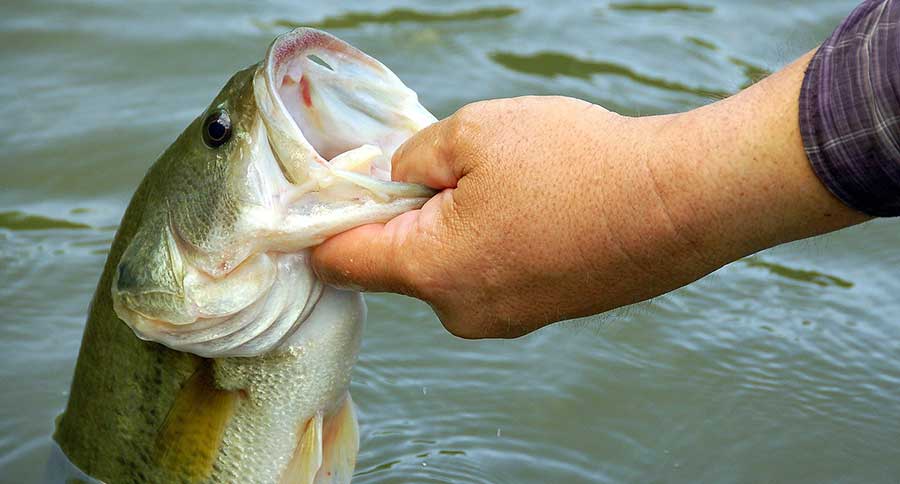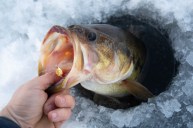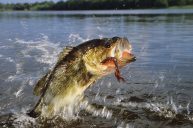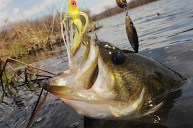As ice-out arrives, here are six spring bass fishing tips to help you catch more smallmouth and largemouth bass early in the season.
Every year anglers get excited at the prospect of early spring bass fishing again. And who can blame us? If you live in a northern climate you've been ice-bound for months. If you live in the south you long to attack pre-spawn bass in the hope of landing a tank.
In either case, let's get right to six quick things to consider when spring fishing for pre-spawn and spawning bass at this time of year.
1. Bang a gong...or rock
Pre-spawn largemouth and smallmouth will often stage in rocky slopes or flats in relatively deep water—20-30 feet—adjacent to their spawning areas.
You can catch big fish at this time by slowly retrieving weighted or diving crankbaits along the bottom. Bang the lures against chunk rock and kick up some silt along the way, mimicking a crawdad scurrying across the bottom.
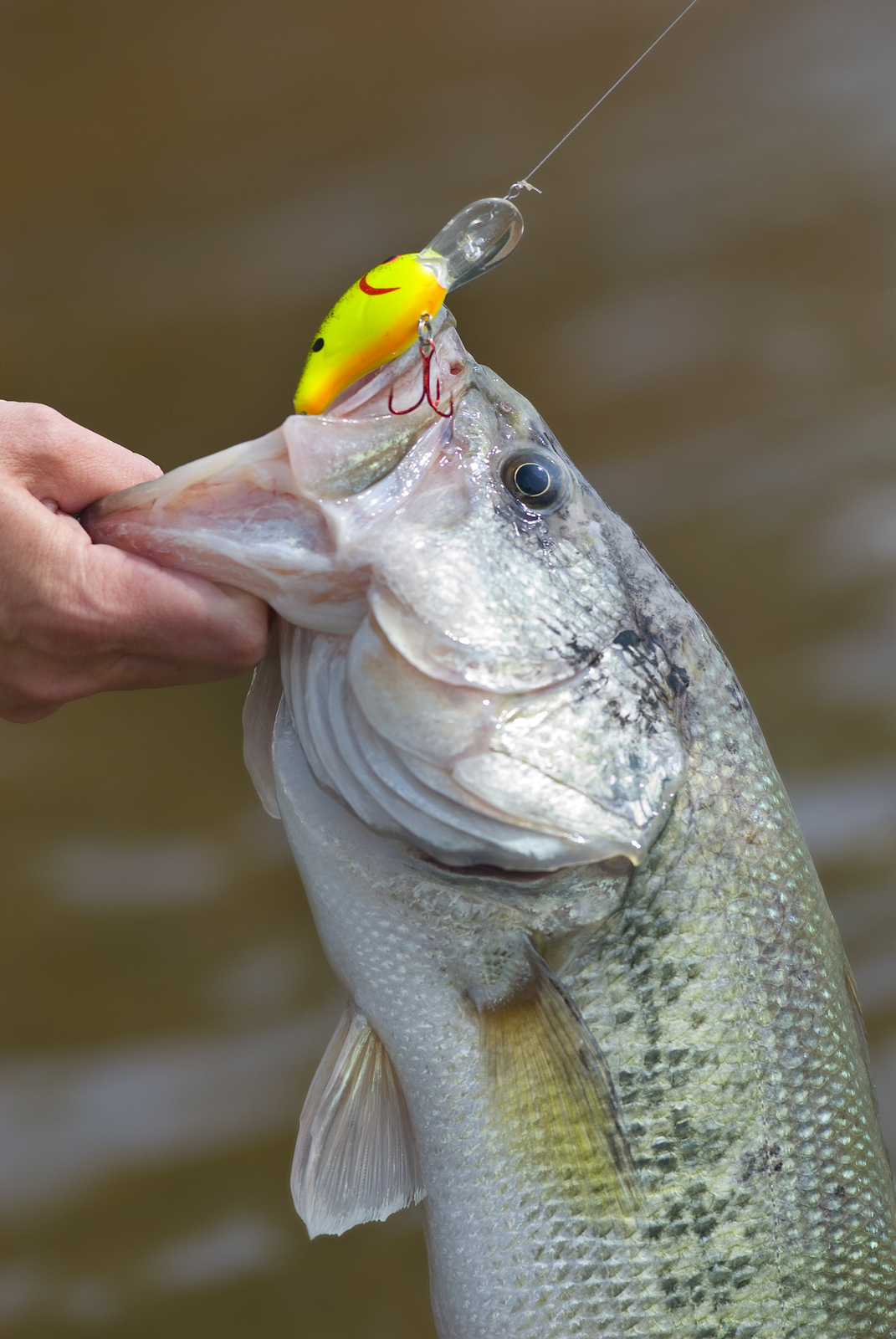
Every time you hit big rocks or boulders, pause the bait momentarily. Big cold water bass often find this presentation irresistible.
2. Night fishing
Don't think of night bass fishing as a summertime-only activity. It can also produce some great fishing in spring when bass are spawning. If you can spot bass spawning beds in shallow water during the day you can successfully go after them at night, when virtually every cast will put you in the strike zone.
Night fishing this time of year has the advantage of zero or close to zero mosquitoes and giant water bugs (as kids we called them "toe biters").
The air temperatures will likely be cool, so you'll want to dress accordingly. You want relatively calm conditions so that you can effectively use topwater lures that make some noise. Jitterbugs, mice lures, the old Bass-Oreno, Crazy Crawlers, and chugging surface lures fit the bill. The optimum time seems to be right after dusk.
3. Use a thermometer
Water temperature is an important key to predicting bass behavior and locating them. Largemouth enter into pre-spawn mode somewhere between 48 and 55 degrees F, and they begin spawning behavior when the temperature gets into the upper 50s and low 60s. Smallmouth do basically the same thing, though at a few degrees cooler than largemouth.
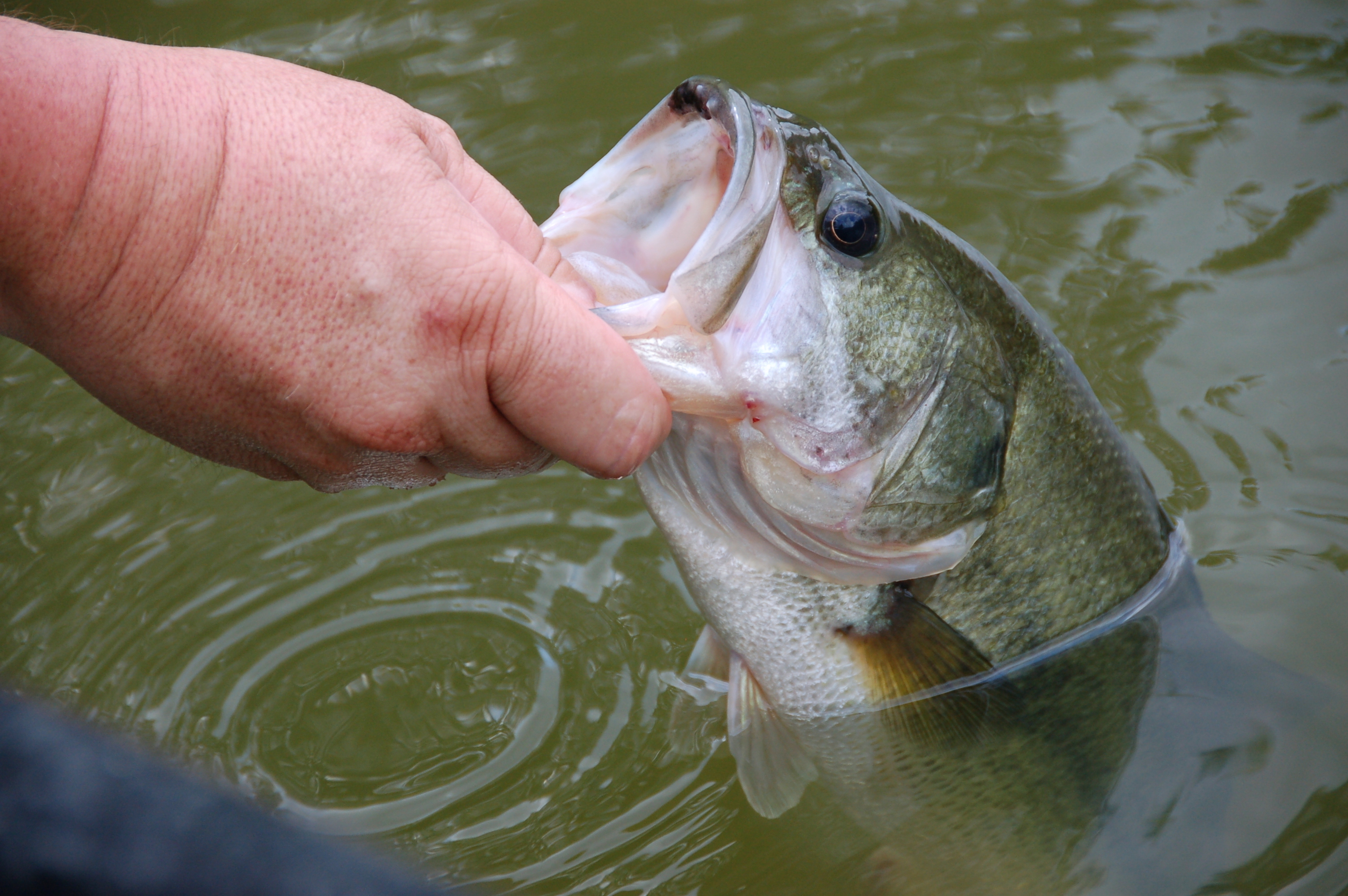
There may be other factors—some experienced bass fishermen credit moon phase—in addition to water temperature that influence spawning behavior. Personally, I give almost all credit to temperature, though I admit to checking the moon phase too. Keeping a journal of conditions, including temperatures (and moon phases, never hurts.
Your boat's electronics should have a temperature gauge that will allow you to track and record water temperature. I've decided that I'm also going to purchase a Fish Hawk TD At-Depth Temperature Gauge because I do a fair amount of fishing from a canoe and from shorelines. This little gadget records water temperatures at depth every five feet. I think it will come in handy when I'm in situations where larger electronics are unavailable or impractical.
Go big once in a while
The old saying is that big baits catch big fish. There is some truth to that, but in my opinion, it's wise not to view it as a hard and fast rule. Small and medium sized baits also catch big fish.
I believe that bass like to eat whatever they can catch, be it big or small. Even still, I'll grab a big lure and give it a workout every now and again. It's especially effective if, during the pre-spawn period, the bite is going well and I've hooked a few males. If this is the case it seems a pretty good bet that larger females will be nearby. You never know, a large lure may be just the thing to trigger that fat mama into striking. Plus, it's fun to mix things up.
Cover water with hard lures
When you're trying to locate fish your presentation will be different than what it is once you've found them. This is why hard lures like diving and lipless crankbaits and rapalas are referred to as "location lures" or "reaction lures."
You're covering water quickly by fan casting a breakline or pre-spawn staging area, and trying to elicit a reaction strike. These lures allow you to do that more so than slower, finesse presentations.
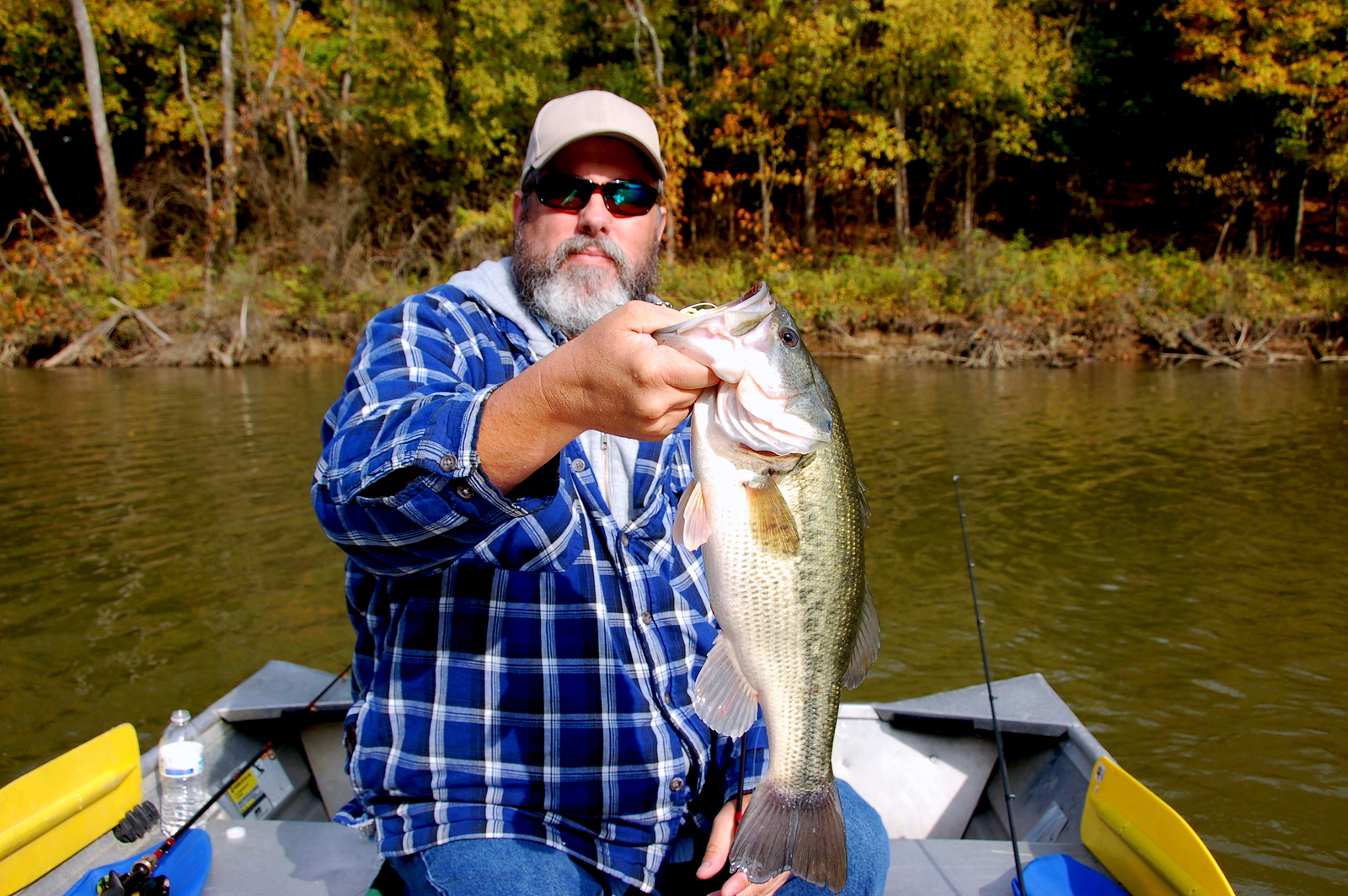
The general school of thinking is that once you've caught fish on a hard bait, you then switch to a jig-n-pig, soft plastic or other slower moving presentation - even live bait. This makes perfect sense and is a great way to approach an area where you've found fish.
But, as I mentioned above, after I've fished an area with a jig or soft plastic, whether I've hooked fish or not, I'll often throw a big lure again.
This just seems to me like a good way to put a cap on a spot before moving onto the next location. But I'll throw the big lure after slowing things down, not before. That big swimbait might be just the thing that triggers a lunker that ignored everything else.
Small lakes and shore fishing
I live in an area that is loaded with small lakes. Many of these lakes prohibit motor boat use and a number of them simply have no landing to accomodate a large boat and trailer. But these lakes hold bass, boy do they hold bass!
This is why I mentioned above that a good deal of my fishing is either via canoe or shore fishing. I can quickly drive from one lake to another, either unload the canoe or put on my waders and hit the shoreline. I've caught a lot of bass, including some hogs, from shorelines.
A canoe or kayak makes for a quiet, low profile approach. Invest in a good pair of polarized sunglasses and use them to scan the water. You will often see bass cruising in an area and can sight fish directly to them. When you see bass have another fishing rod rigged and ready with a soft plastic or even a nightcrawler. If a couple of casts with a stick bait doesn't garner any interest, throw the rubber or crawler.
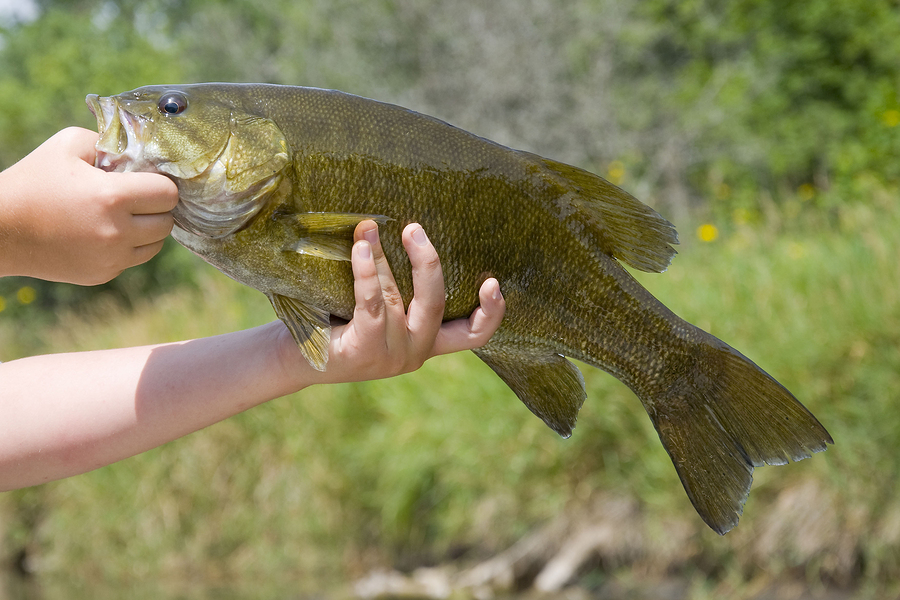
If I'm assessing a shoreline I'll look at the lay of the land around the lake to decide where to fish. You can often tell from the geography what the structure under the water is like. Early in the season you'll want to focus on those sides of a lake that get more sun and heat. These areas will draw pre-spawn and spawning fish first.
I also look for hillsides with chunk rock or boulders, as these will often signal underwater slopes, which make for great staging areas for pre-spawn bass.
Often these slopes have adjacent flat areas where bass will move in to feed and later spawn. This is ideal. After cover casting the flat I will quietly wade - if the substrate allows - to be able to cast the slope. It's amazing how many fish stage in these steeper slope areas early in the season.
If you find good locations like this be sure to come back as the spawning season progresses. You'll can catch fish during pre-spawn, spawn and post-spawn.
Like what you see here? Experience more articles and photographs about the great outdoors at the Facebook page, Stumpjack Outdoors.
NEXT: BASS TOURNAMENT ANGLER CATCHES GIANT 60-INCH MUSKY
WATCH: MIKE IACONELLI TELLS US ABOUT HIS NEW FISHING SHOW ON NAT GEO WILD
